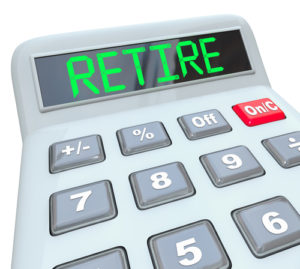 When you’re investing and planning for retirement, make realistic calculations rather than indulging in wishful thinking.
When you’re investing and planning for retirement, make realistic calculations rather than indulging in wishful thinking.
If you plan to retire at 65, and you’re 50, you won’t be dipping into your investments for 15 years. If you are in reasonably good health, you could live well into your 80s: possibly longer.
Let’s say you have $200,000 in your RRSP, and expect to add $15,000 in each of the next 15 years.
To determine if this is enough, you need to make some realistic retirement calculations about investment returns and income needs.
What you can expect
Long-term studies show that the stock market as a whole generally produces total pre-tax annual returns of 8% to 10%, or around 6% after inflation. For the purposes of retirement planning, we’ll assume a 6% yearly return, and disregard inflation. Your $200,000 grows to $479,312*, and your yearly $15,000 RRSP contributions add up to $370,088, for total retirement savings of $849,400.
*Be sure to check your math. There are many compound-return calculators available online. For example, you can find a comprehensive compound-return calculator at the Bank of Canada’s web site.
Income and outgo
If you continue to earn 6% a year, and you withdraw $50,964 a year (6% of the $849,400 in your RRSP), you can avoid dipping into capital until your mid-70s, when RRIF rules require a larger withdrawal.
However, if you start taking money out faster, or earn lower returns, you’ll run out of money.
If you withdraw $90,000 a year while earning 6%, the money you’ve accumulated will last just over 13 years. If you earn 5% but withdraw $90,000 a year, your money will be gone in just over 12 years.
Beware of getting caught in a vicious circle
Some investors, worried about their money eroding, or tempted by even greater gains, seek higher returns in riskier investments, such as gold and silver stocks, even in high-risk junior stocks. In years when these volatile investments lose money, these investors will then have less capital for the following year. This may lead to a vicious circle of lower income and shrinking capital.
If you planned to retire in about four years, we think the best way to invest would be in equities. You may want to emphasize utilities and banks for their high and generally secure dividends.
If you choose to keep the funds in fixed-income instruments, then you are best to stick with short-term investments. We don’t recommend longer-term bonds or other fixed-income investments right now. Interest rates will likely hold steady or rise. That means you will only earn interest income on the bonds; instead of capital gains, your bond holdings could produce capital losses.
What about buying real estate instead of stocks?
The key difference between investing in stocks and owning real estate is that stocks are a passive investment, while owning real estate requires active participation: it’s like running a small business. With stocks, you only have to tell your broker to buy; everything else is taken care of for you. With real estate, buying is just the start. After that comes the need for fire and liability insurance, finding tenants, collecting rents, negotiating leases and mortgages, finding and riding herd on trades people to maintain the place for you, complying with zoning, rent controls and other legislation, and so on.
Some people find that managing a piece of property or a small real estate portfolio is an appealing hobby; some of these people make a lot of money out of their hobby over a period of years. Of course, they might have made a lot of money by devoting the same effort to any of a variety of businesses. However, if you invest in real estate without an appreciation of the work it requires, you are inviting dismal results.
Key investment advice
Instead of taking on extra risk, take the safe route to retirement planning. Save more now, work longer, or plan to spend less. Retirement leaves you with lots of free time, and filling it costs money. But postponing retirement, or working part-time as long as you’re able, can pay off in higher current income, more contentment and greater long-term security.
What is an RRSP?
RRSPs (Registered Retirement Savings Plans) are a great way for investors to cut their tax bills and make more money from their retirement investing. RRSPs are a form of tax-deferred savings plan. RRSP contributions are tax deductible, and the investments grow tax-free. (Note that you can currently contribute up to 18% of your earned income from the previous year. March 1 is the last day you can contribute to an RRSP and deduct your contribution from your previous year’s income.
When you later begin withdrawing the funds from your RRSP, they are taxed as ordinary income. If you want to pay less tax on dividends while you’re still working, investing in an RRSP is the way to go.
Have you been planning for retirement? Have you been realistic about your retirement needs? Let us know if your retirement calculations have turned up any speed bumps.
 Pat McKeough has been one of Canada’s most respected investment advisors for over three decades. He is the founder and senior editor of TSI Network and the founder of Successful Investor Wealth Management. He is also the author of several acclaimed investment books.
Pat McKeough has been one of Canada’s most respected investment advisors for over three decades. He is the founder and senior editor of TSI Network and the founder of Successful Investor Wealth Management. He is also the author of several acclaimed investment books.

